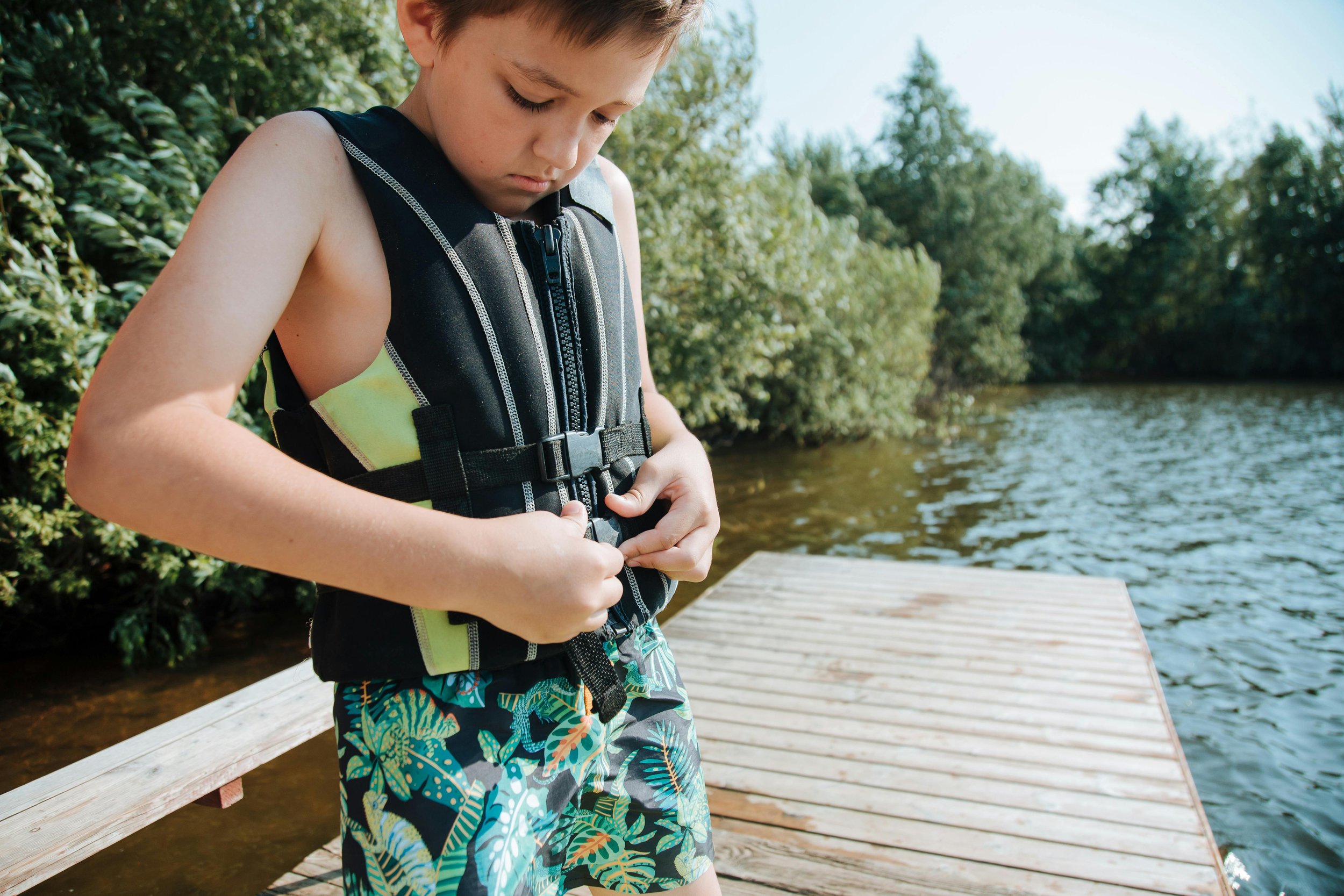Summer Water Safety
Forecasters are predicting a long, hot summer, which may mean more time in the water! Whether you’re diving into the community pool, meeting friends at the lake, or having water fun at home, it’s important to know the risks and what to do if something happens.
Water safety is for everyone
People of all ages need to know how to safely interact with water. Drowning is the leading cause of injury death in children under 4. The risk of drowning also is higher for teenagers, who may think they are better swimmers than they are. Even if you are a strong swimmer, accidents can happen to anyone.
Teach children about how to stay safe in the water
The American Red Cross offers WHALE Tales: Water Habits Are Learned Early, a free online water safety program for kids in grades K-2 and 3-5. The program includes videos, activity sheets, and a parent and caregiver guide. The National Drowning Prevention Alliance also has a Pool Safety Coloring Book for children.
Don’t get distracted
Drowning deaths among children often happen when the adult is distracted by their cell phone, yardwork, drinking, or other activity. Choose someone to be a “water watcher” and take turns every 15-20 minutes. Watch this 30-second video.
Watching isn’t always enough
Most drowning deaths among children under 4 happen during non-swim times, when no one else is near the water. If you have young children, make sure they can’t reach swimming pools, hot tubs, filled bathtubs, or other standing water at home by themselves. Fence in swimming pools and keep the gate locked. Dump out water from buckets, bathtubs, and kiddie pools after each use. Use latches or doorknob covers to keep young children from going outside or into bathrooms or garages without you knowing.
Water doesn’t have to be deep to be dangerous
Young kids can drown in just one-to-two inches of water. Things like fountains, bird baths, coolers, pets’ water bowls, and open trash cans can collect water and become a drowning hazard, even when you aren’t using them.
Never swim alone
Even among older kids and teens, most childhood drownings happen when there is no adult watching. Make sure your child knows not to swim when there isn’t a lifeguard or responsible adult there. In a group of friends, use a buddy system to keep an eye on one another.
Use life jackets near lakes, rivers, and the ocean
Swimming in natural bodies of water can be a lot different from swimming in a pool. Stay in swimming areas and away from boats or people fishing. Kids should wear life jackets that fit well and are approved by the U.S. Coast Guard, even when they are on the shore. Everyone should wear life jackets when on boats, jet skis, or other watercraft.
Go into the water for the first time feet first
Diving into unknown water is dangerous because you don’t know how deep the water is. Hitting your head or back during a dive can lead to serious and permanent spinal injuries.
Stay sober
Whether you are in the water or watching from the sidelines, alcohol and drug use significantly increase the risk of you or your loved ones drowning. It makes it hard to keep your balance, coordinate your movements, judge safe or unsafe situations, and respond if someone is in trouble.
Start swim lessons when your child is ready
Even kids under 4 can start to learn the basics of swimming. Your pediatrician is a good person to ask about whether your child is ready for lessons. Also, it’s never too late to learn water survival skills. The YMCA of Muncie offers swim classes for ages 6 months to adult.
Be ready to respond
Everyone should learn CPR and safe rescue techniques:
If a child is missing, check the water first: seconds count in preventing death or disability!
Alert the lifeguard or shout for help.
Know how to tell if someone is in trouble. A swimmer needs help right away if they:
Are not able to move or tread water.
Are face down in the water and still.
Are trying to swim but not making any moves forward.
Get the person out of the water (without putting yourself in danger).
Ask someone to call 911, then start rescue breathing and CPR.
If you are alone, start rescue breathing and CPR for 2 minutes, then call 911. View videos of CPR demonstrations for infants, children, and adults.
Sources: Drowning Prevention for Curious Toddlers and Water Safety for Teens, American Association of Pediatrics; Water Safety, Baby and Child CPR, and Adult CPR, American Red Cross
Additional Resources:
In the Home Water Safety Checklist, National Drowning Prevention Alliance
Vacation Water Safety Checklist, National Drowning Prevention Alliance
Camping Water Safety Checklist, National Drowning Prevention Alliance



